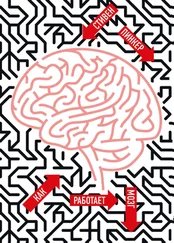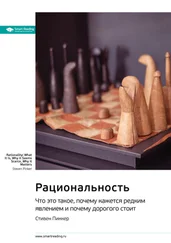Maccoby, E. E., & Jacklin, C. N. 1987. The psychology of sex differences. Stanford, Calif.: Stanford University Press.
Maccoby, E. E., & Martin, J. A. 1983. Socialization in the context of the family: Parent-child interaction. In P. H. Mussen & E. M. Hetherington (Eds.), Handbook of child psychology: Socialization, personality, and social development (4 ed., Vol. 4,). New York: Wiley.
Macnamara, J. 1999. Through the rearview mirror: Historical reflections on psychology. Cambridge, Mass.: MIT Press.
Macnamara, J., & Reyes, G. E. (Eds.) 1994. The logical foundations of cognition. New York: Oxford University Press.
Maguire, E. A., Gadian, D. G., Johnsrude, I. S., Good, C. D., Ashburner, J., Frackowiak, R. S. J., & Frith, C. D. 2000. Navigation-related structural change in the hippocampi of taxi drivers. PNAS, 97, 4398–4403.
Maier, P. 1997. American scripture: Making the Declaration of Independence. New York: Knopf.
Mallon, R., & Stich, S. 2000. The odd couple: The compatibility of social construction and evolutionary psychology. Philosophy of Science, 67, 133–154.
Marcus, G. F. 1998. Rethinking eliminative connectionism. Cognitive Psychology, 37, 243–282.
Marcus, G. F. 2001a. The algebraic mind: Reflections on connectionism and cognitive science. Cambridge, Mass.: MIT Press.
Marcus, G. F. 2001b. Plasticity and nativism: Towards a resolution of an apparent paradox. In S. Wermter, J. Austin, & D. Willshaw (Eds.), Emergent neural computational architectures based on neuroscience. New York: Springer-Verlag.
Marcus, G. F., Brinkmann, U., Clahsen, H., Wiese, R., & Pinker, S. 1995. German inflection: The exception that proves the rule. Cognitive Psychology, 29, 189–256.
Marks, I. M., & Nesse, R. M. 1994. Fear and fitness: An evolutionary analysis of anxiety disorders. Ethology and Sociobiology, 15, 247–261.
Marr, D. 1982. Vision. San Francisco: W. H. Freeman.
Marslen-Wilson, W. D., & Tyler, L. K. 1998. Rules, representations, and the English past tense. Trends in Cognitive Science, 2, 428–435.
Martin, N. G., Eaves, L. J., Heath, A. C., Jardine, R., Feingold, L. M., & Eysenck, H. J. 1986. Transmission of social attitudes. Proceedings of the National Academy of Science, 83, 4364–4368.
Martindale, C. 1990. The clockwork muse: The predictability of artistic change. New York: Basic Books.
Marx, K. 1845/1989. Theses on Feuerbach. In K. Marx & F. Engels, Basic writings on politics and philosophy. New York: Anchor Books.
Marx, K. 1847/1995. The poverty of philosophy (Quelch, H., Trans.). Amherst, N. Y.: Prometheus Books.
Marx, K. 1859/1979. Contribution to the critique of political economy. New York: International Publishers.
Marx, K. 1867/1993. Capital: A critique of political economy (Ernest Mandel, Trans.). London: Penguin.
Marx, K., & Engels, F. 1844/1988. The economic and philosophic manuscripts of 1844. Amherst, N. Y.: Prometheus Books.
Marx, K., & Engels, F. 1846/1963. The German ideology: Parts I & III. New York: New World Paperbacks/International Publishers.
Masters, R. D. 1982. Is sociobiology reactionary? The political implications of inclusive-fitness theory. Quarterly Review of Biology, 57, 275–292.
Masters, R. D. 1989. The Nature of Politics. New Haven: Yale University Press. Maynard Smith, J. 1975/1993. The theory of evolution. New York: Cambridge University Press. Maynard Smith, J., & Szathmáry, E. 1997. The major transitions in evolution. New York: Oxford University Press.
Mayr, E. 1963. Animal species and evolution. Cambridge, Mass.: Harvard University Press.
Mayr, E. 1982. The growth of biological thought. Cambridge, Mass.: Harvard University Press.
McCauley, C. R. 1995. Are streotypes exaggerated? A sampling of racial, gender, academic, occupational, and political stereotypes. In Y.-T. Lee, L. J. Jussim, & C. R. McCauley (Eds.), Stereotype accuracy: Toward appreciating group differences. Washington, DC: American Psychological Association.
McClelland, J. L., Rumelhart, D. E., & the PDP Research Group. 1986. Parallel distributed processing: Explorations in the microstructure of cognition (Vol. Vol. 2: Psychological and biological models). Cambridge, Mass.: Bradford Books/MIT Press.
McCloskey, M. (1983,). Intuitive physics. Scientific American, 248, 122–130. McCloskey, M., & Cohen, N. J. 1989. Catastrophic interference in connectionist networks: The sequential learning problem. In G. H. Bower (Ed.), The psychology of learning and motivation (Vol. Vol. 23,). New York: Academic Press.
McCord, W. M. 1989. Voyages to Utopia: from monastery to commune: the search for the perfect society in modern times. New York: Norton.
McCrae, R. R., Costa, P. T., Ostendorf, F., Angleitner, A., Hrebickova, M., Avia, M. D., Sanz, J., Sanchez-Bernardos, M. L., Kusdil, M. E., Woodfield, R., Saunders, P. R., & Smith, P. B. 2000. Nature over nurture: Temperament, personality, and life span development. Journal of Personality and Social Psychology, 78, 173–186.
McElroy, W. 1996. Sexual correctness: The gender-feminist attack on women. Jefferson, NC: McFarland.
McGinn, C. 1993. Problems in philosophy: The limits of inquiry. Cambridge, Mass.: Blackwell.
McGinn, C. 1997. Evil, ethics, and fiction. New York: Oxford University Press. McGinn, C. 1999. The mysterious flame: Conscious minds in a material world. New York, N. Y.: Basic Books.
McGinnis, J. O. 1996. The original constitution and our origins. Harvard Journal of Law and Public Policy, 19, 251–261.
McGinnis, J. O. 1997. The human constitution and constitutive law: A prolegomenon. Journal of Contemporary Legal Issues, 8, 211–239.
McGue, M. 1997. The democracy of the genes. Nature, 388, 417–418. McGuinness, D. 1997. Why our children can't read. New York: Free Press.
McLearn, G. E., Johansson, B., Berg, S., Pedersen, N. L., Ahern, F., Petrill, S. A., & Plomin, R. 1997. Substantial genetic influence on cognitive abilities in twins 80 or more years old. Science, 276, 1560–1563.
McLeod, P., Plunkett, K., & Rolls, E. T. 1998. Introduction to connectionist modeling of cognitive processes. New York: Oxford University Press.
Mead, M. 1928. Coming of age in Samoa: A psychological study of primitive youth for western civilisation. New York: Blue Ribbon Books.
Mead, M. 1935/1963. Sex and temperament in three primitive societies. New York: William Morrow.
Mealey, L. 1995. The sociobiology of sociopathy: An integrated evolutionary model. Behavioral and Brain Sciences, 18, 523–541.
Mealey, L., Daood, C., & Krage, M. 1996. Enhanced memory for faces of cheaters. Ethology and Sociobiology, 17, 119–128.
Meltzoff, A. N. 1995. Understanding the intentions of others: Re-enactment of intended acts by 18 — month-old children. Developmental Psychology, 31, 838–850.
Melzack, R. 1990. Phantom limbs and the concept of a neuromatrix. Trends in Neurosciences, 13, 88–92.
Melzack, R., Israel, R., Lacroix, R., & Schultz, G. 1997. Phantom limbs in people with congenital limb deficiency or amputation in early childhood. Brain, 120, 1603–1620.
Mesquida, C. G., & Wiener, N. I. 1996. Human collective aggression: A behavioral ecology perspective. Ethology and Sociobiology, 17, 247–262.
Miller, E. E. 1997. Could nonshared environmental variation have evolved to assure diversification through randomness? Evolution and Human Behavior, 18, 195–221.
Miller, E. K. 2000a. The prefrontal cortex and cognitive control. Nature Reviews Neuroscience, 1, 59–65.
Miller, G. A., Galanter, E., & Pribram, K. H. 1960. Plans and the structure of behavior. New York: Adams-Bannister-Cox.
Miller, G. F. 2000b. The mating mind: How sexual choice shaped the evolution of human nature. New York: Doubleday.
Miller, G. F. 2000c. Sexual selection for indicators of intelligence. In G. Bock, J. A. Goode, & K. Webb (Eds.), The nature of intelligence. Chichester, UK: Wiley.
Читать дальше
Конец ознакомительного отрывка
Купить книгу











